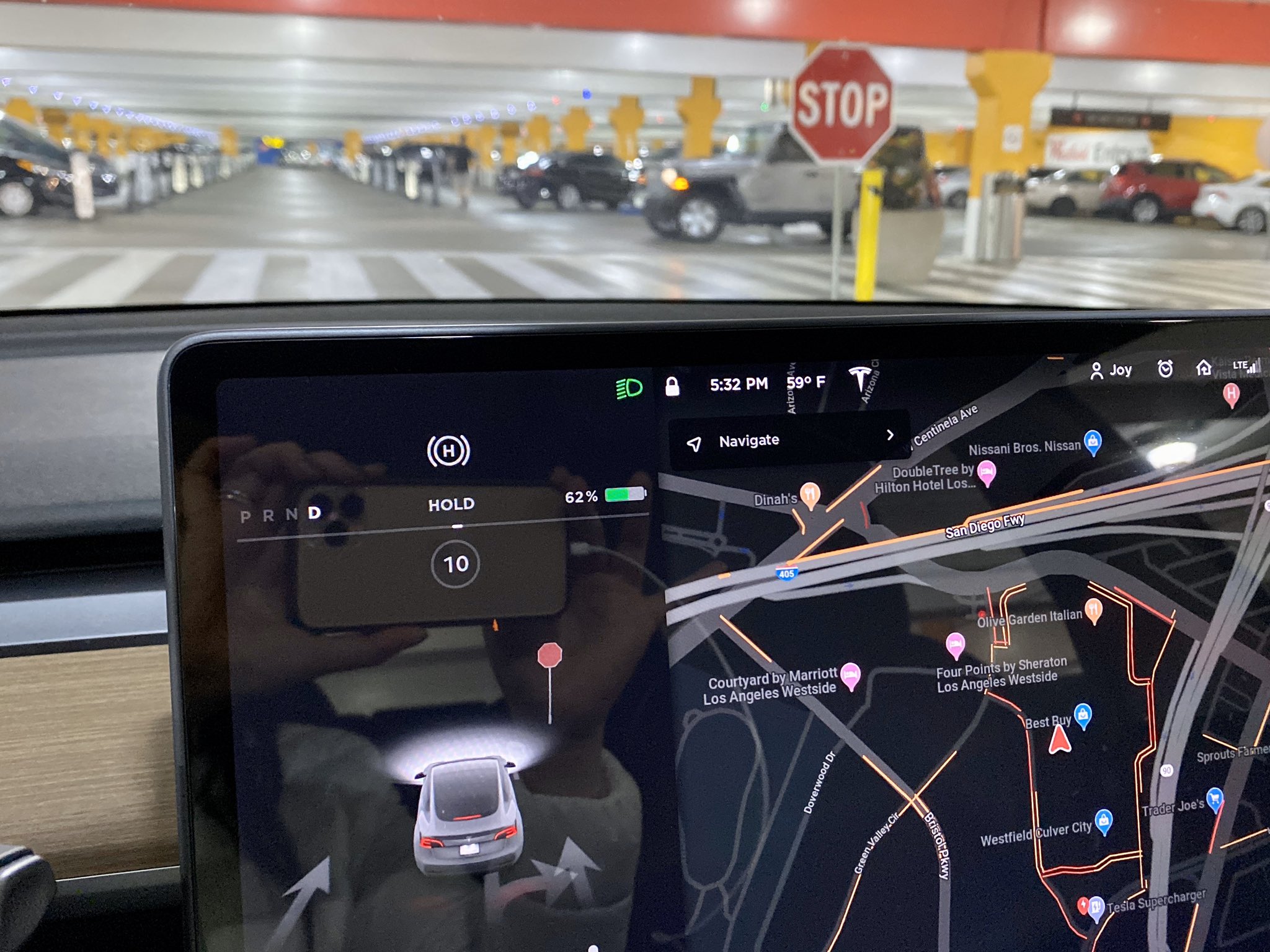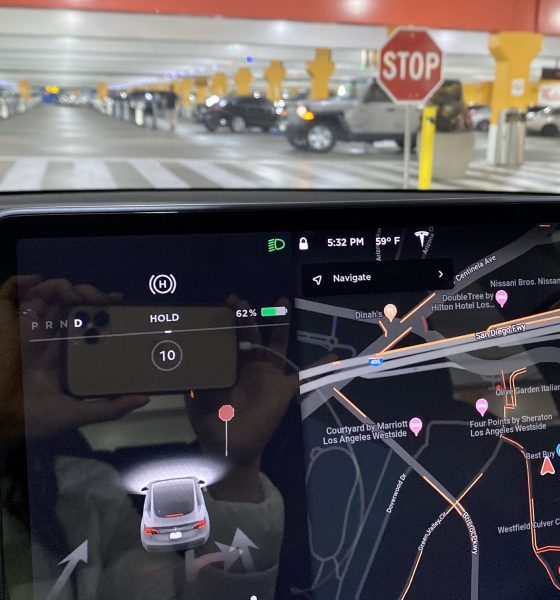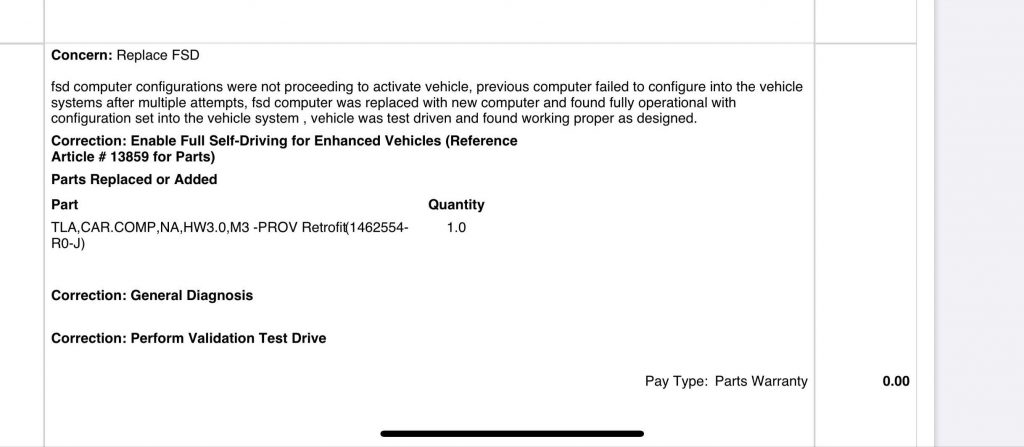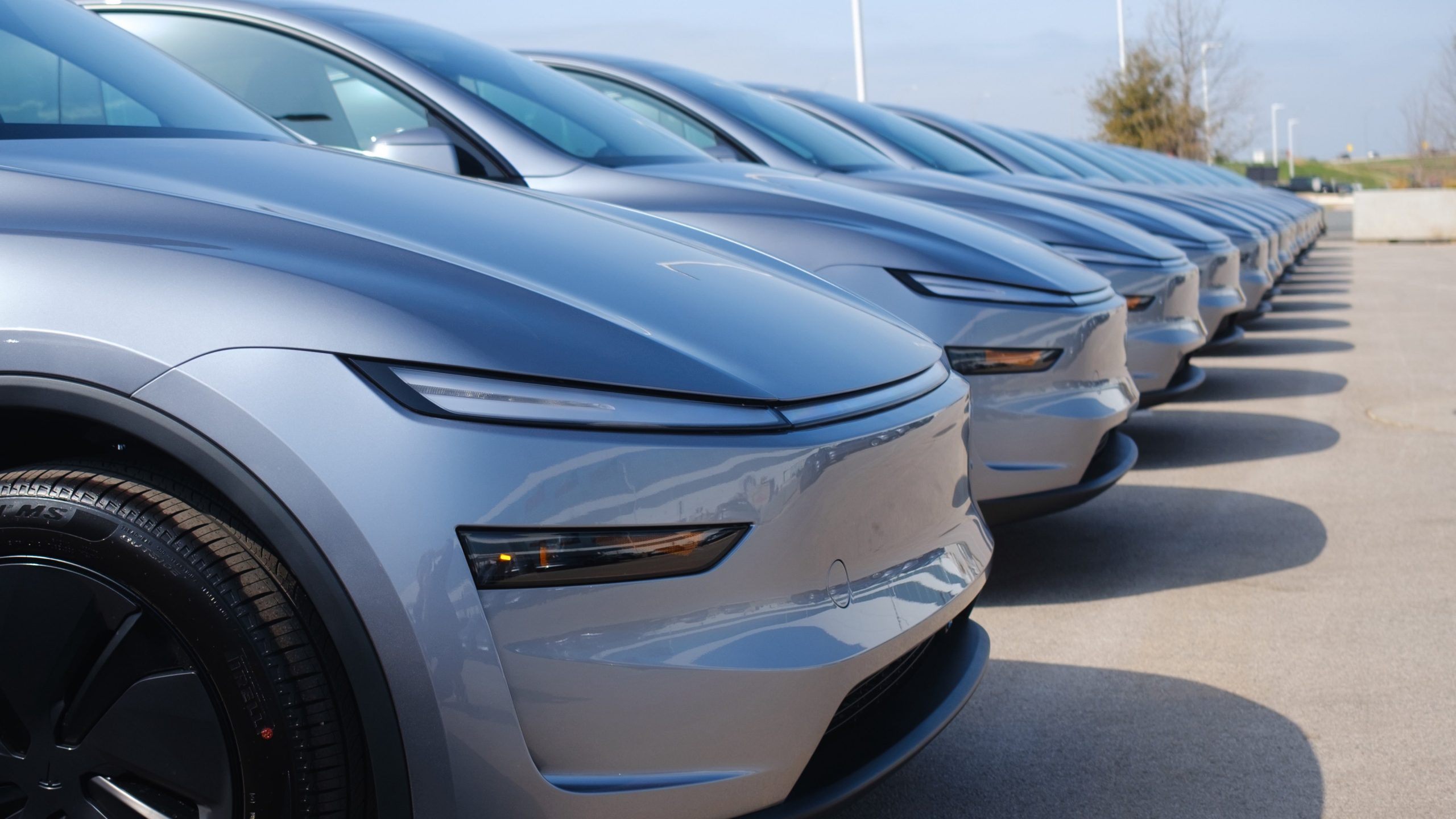

News
Tesla Model 3 gets Full Self-Driving HW3 upgrade: Full details with lessons learned
True to Elon Musk’s expectations on Twitter last month, it appears that Tesla is now looking to ramp Hardware 3 retrofits for owners who purchased the Full Self-Driving suite and whose cars are equipped with HW2 or HW2.5. A recent account involving a Tesla owner-enthusiast’s experience with her Model 3’s HW3 upgrade shows that there are still some areas in the retrofit process that can be improved.
Tesla Model 3 owner-enthusiast TeslaJoy was looking to do a video on the company’s recent voice command update when she noticed that the feature on her vehicle was not working properly. This prompted her to make an appointment with Tesla to get her car checked in and fixed. During the troubleshooting process, she inquired if a possible HW3 retrofit could be done to her vehicle as well. Fortunately, a HW3 unit was available for her Model 3, and so, a rather eventful upgrade process began.
Tesla Service Centers currently receive batches of HW3 units from the electric car maker, and each unit is assigned to a specific VIN. This is the reason why for now, at least, owners are not advised to call Tesla to schedule a HW3 retrofit. Fortunately for Joy, the Tesla Service Center opted to perform the HW3 upgrade at the same time as her appointment, since she would need to bring her Model 3 back for a retrofit anyway.

Since the retrofit was estimated to take around 5 hours, Tesla asked the Model 3 owner to leave her car for the day and claim it the next business day. That was December 31, which meant that the vehicle should be ready the day after New Year’s. As it would turn out, the Service Center would end up encountering difficulties installing the necessary firmware on Joy’s Model 3. This resulted in delays, which culminated in the vehicle’s HW3 retrofit being completed on January 5, 2020, over five days after the Model 3 owner turned in her car.
Hardware 3 retrofits are available for owners who have purchased Tesla’s Full Self-Driving suite, and whose cars are still equipped with the company’s HW2 and HW2.5 units. With Hardware 3 installed, owners will be able to utilize the full suite of FSD capabilities that the company is rolling out today. One of these is the FSD preview that Tesla rolled out for the holidays, as well as features like traffic cone recognition.
True to Elon Musk’s words on Twitter, the HW3 retrofit is free for owners who have purchased the company’s FSD suite. Joy, for her part, was able to get FSD last March at a discounted price of $2,000 on top of her Enhanced Autopilot. FSD currently costs $7,000 when it is included in a new vehicle’s order.
Based on Joy’s experience, it appears that owners should expect to wait some time for their vehicles are set to be retrofitted. In the Model 3 owner’s case, her car’s upgrade ended up taking days since the first HW3 kit that was installed did not function properly. This resulted in the vehicle essentially getting retrofitted twice, causing delays. Tesla did give Joy a $500 Uber voucher due to the absence of loaner vehicles, but the whole experience showed notable points for improvement nonetheless.
In a way, TeslaJoy‘s experience with her Model 3’s HW3 retrofit stands in stark contrast with the experiences of Model S owner Sofiaan Fraval, whose car was upgraded by a Service Center during a voluntary HEPA replacement. In Fraval’s case, his Model S was fully retrofitted within a matter of hours, and it was calibrated in pretty much the same day. A Tesla Model S owner who runs the Electric Dreams YouTube channel also received his vehicle’s HW3 retrofit without any issues, and it was performed by a mobile technician, not a Service Center.
In the Electric Dreams host’s case, the entire HW3 retrofit was conducted from the convenience of his home, with a mobile service tech coming over in the morning, taking an hour and a half for the installation to be completed, and an additional two hours for the necessary firmware to be loaded onto the vehicle. This is in line with Elon Musk’s previous statement on Twitter, where he stated that HW3 retrofits should be possible through Tesla’s mobile service fleet.
Overall, there seems to be a variance with regards to the experience of owners when getting their vehicles retrofitted with Tesla’s FSD computer. Some owners seem to be experiencing a seamless, painless process, while some, like Joy, end up having to test their patience. Hopefully, as Tesla ramps its HW3 retrofits this quarter, the company could work in optimizing its upgrade process, so there are more experiences like the Electric Dreams host’s, and less like TeslaJoy‘s.
Watch TeslaJoy‘s HW3 experience in the video below.

News
Tesla Model Y configurations get hefty discounts and more in final sales push

Tesla Model Y configurations are getting hefty discounts and more benefits as the company is in the phase of its final sales push for the year.
Tesla is offering up to $1,500 off new Model Y Standard trims that are available in inventory in the United States. Additionally, Tesla is giving up to $2,000 off the Premium trims of the Model Y. There is also one free upgrade included, such as a paint color or interior color, at no additional charge.
NEWS: Tesla is now offering discounts of up to $1,500 off new Model Y Standard vehicles in U.S. inventory. Discounts of up to $2,000 are also being offered on Model Y Premiums.
These discounts are in addition to the one free upgrade you get (such as Diamond Black paint) on… pic.twitter.com/L0RMtjmtK0
— Sawyer Merritt (@SawyerMerritt) December 10, 2025
Tesla is hoping to bolster a relatively strong performance through the first three quarters of the year, with over 1.2 million cars delivered through the first three quarters.
This is about four percent under what the company reported through the same time period last year, as it was about 75,000 vehicles ahead in 2024.
However, Q3 was the company’s best quarterly performance of all time, and it surged because of the loss of the $7,500 EV tax credit, which was eliminated in September. The imminent removal of the credit led to many buyers flocking to Tesla showrooms to take advantage of the discount, which led to a strong quarter for the company.
2024 was the first year in the 2020s when Tesla did not experience a year-over-year delivery growth, as it saw a 1 percent slide from 2023. The previous years saw huge growth, with the biggest coming from 2020 to 2021, when Tesla had an 87 percent delivery growth.
This year, it is expected to be a second consecutive slide, with a drop of potentially 8 percent, if it manages to deliver 1.65 million cars, which is where Grok projects the automaker to end up.
Tesla will likely return to its annual growth rate in the coming years, but the focus is becoming less about delivery figures and more about autonomy, a major contributor to the company’s valuation. As AI continues to become more refined, Tesla will apply these principles to its Full Self-Driving efforts, as well as the Optimus humanoid robot project.
Will Tesla thrive without the EV tax credit? Five reasons why they might
These discounts should help incentivize some buyers to pull the trigger on a vehicle before the year ends. It will also be interesting to see if the adjusted EV tax credit rules, which allowed deliveries to occur after the September 30 cutoff date, along with these discounts, will have a positive impact.
News
Tesla FSD’s newest model is coming, and it sounds like ‘the last big piece of the puzzle’
“There’s a model that’s an order of magnitude larger that will be deployed in January or February 2026.”

Tesla Full Self-Driving’s newest model is coming very soon, and from what it sounds like, it could be “the last big piece of the puzzle,” as CEO Elon Musk said in late November.
During the xAI Hackathon on Tuesday, Musk was available for a Q&A session, where he revealed some details about Robotaxi and Tesla’s plans for removing Robotaxi Safety Monitors, and some information on a future FSD model.
While he said Full Self-Driving’s unsupervised capability is “pretty much solved,” and confirmed it will remove Safety Monitors in the next three weeks, questions about the company’s ability to give this FSD version to current owners came to mind.
Musk said a new FSD model is coming in about a month or two that will be an order-of-magnitude larger and will include more reasoning and reinforcement learning.
He said:
“There’s a model that’s an order of magnitude larger that will be deployed in January or February 2026. We’re gonna add a lot of reasoning and RL (reinforcement learning). To get to serious scale, Tesla will probably need to build a giant chip fab. To have a few hundred gigawatts of AI chips per year, I don’t see that capability coming online fast enough, so we will probably have to build a fab.”
NEWS: Elon Musk says FSD Unsupervised is “pretty much solved at this point” and that @Tesla will be launching Robotaxis with no safety monitors in about 3 weeks in Austin, Texas. He also teased a new FSD model is coming in about 1-2 months.
“We’re just going through validation… https://t.co/Msne72cgMB pic.twitter.com/i3wfKX3Z0r
— Sawyer Merritt (@SawyerMerritt) December 10, 2025
It rings back to late November when Musk said that v14.3 “is where the last big piece of the puzzle finally lands.”
With the advancements made through Full Self-Driving v14 and v14.2, there seems to be a greater confidence in solving self-driving completely. Musk has also personally said that driver monitoring has been more relaxed, and looking at your phone won’t prompt as many alerts in the latest v14.2.1.
This is another indication that Tesla is getting closer to allowing people to take their eyes off the road completely.
Along with the Robotaxi program’s success, there is evidence that Tesla could be close to solving FSD. However, it is not perfect. We’ve had our own complaints with FSD, and although we feel it is the best ADAS on the market, it is not, in its current form, able to perform everything needed on roads.
But it is close.
That’s why there is some legitimate belief that Tesla could be releasing a version capable of no supervision in the coming months.
All we can say is, we’ll see.
Investor's Corner
SpaceX IPO is coming, CEO Elon Musk confirms
However, it appears Musk is ready for SpaceX to go public, as Ars Technica Senior Space Editor Eric Berger wrote an op-ed that indicated he thought SpaceX would go public soon. Musk replied, basically confirming it.

Elon Musk confirmed through a post on X that a SpaceX initial public offering (IPO) is on the way after hinting at it several times earlier this year.
It also comes one day after Bloomberg reported that SpaceX was aiming for a valuation of $1.5 trillion, adding that it wanted to raise $30 billion.
Musk has been transparent for most of the year that he wanted to try to figure out a way to get Tesla shareholders to invest in SpaceX, giving them access to the stock.
He has also recognized the issues of having a public stock, like litigation exposure, quarterly reporting pressures, and other inconveniences.
However, it appears Musk is ready for SpaceX to go public, as Ars Technica Senior Space Editor Eric Berger wrote an op-ed that indicated he thought SpaceX would go public soon.
Musk replied, basically confirming it:
As usual, Eric is accurate
— Elon Musk (@elonmusk) December 10, 2025
Berger believes the IPO would help support the need for $30 billion or more in capital needed to fund AI integration projects, such as space-based data centers and lunar satellite factories. Musk confirmed recently that SpaceX “will be doing” data centers in orbit.
AI appears to be a “key part” of SpaceX getting to Musk, Berger also wrote. When writing about whether or not Optimus is a viable project and product for the company, he says that none of that matters. Musk thinks it is, and that’s all that matters.
It seems like Musk has certainly mulled something this big for a very long time, and the idea of taking SpaceX public is not just likely; it is necessary for the company to get to Mars.
The details of when SpaceX will finally hit that public status are not known. Many of the reports that came out over the past few days indicate it would happen in 2026, so sooner rather than later.
But there are a lot of things on Musk’s plate early next year, especially with Cybercab production, the potential launch of Unsupervised Full Self-Driving, and the Roadster unveiling, all planned for Q1.








